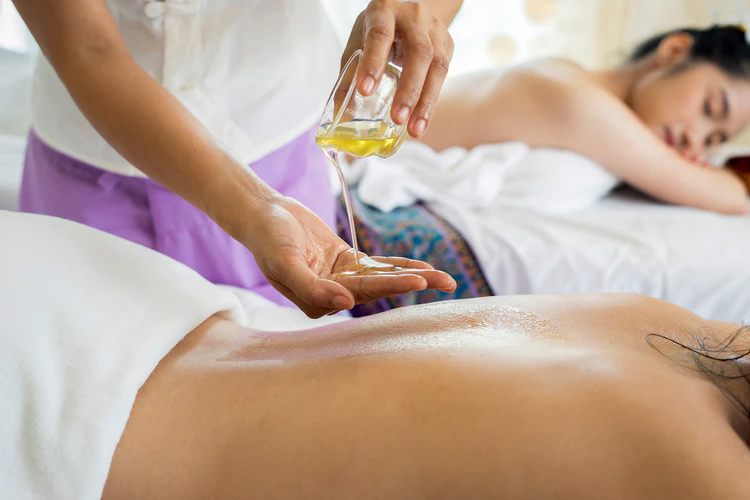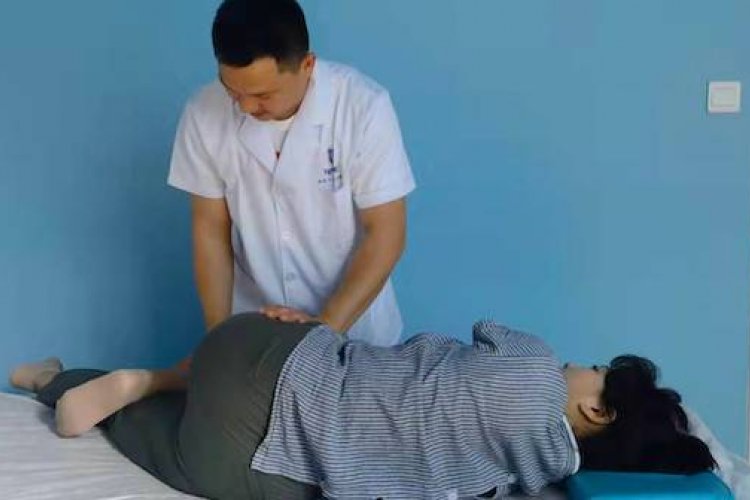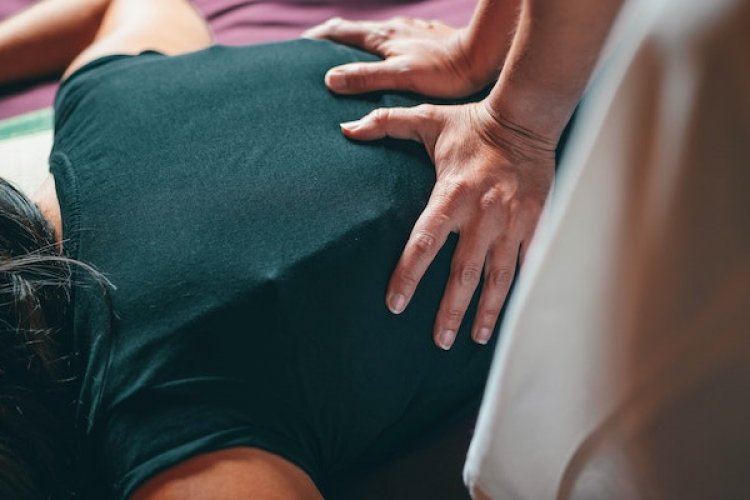Let Your Hair Down: Getting Pampered in the Capital

“To pamper” is defined as “to indulge with every attention, comfort, and kindness.” When we read such a gentle definition, it’s a wonder that we put actively pampering ourselves – or seeking others to do it for us – so low on our list of priorities. Thankfully, with low prices and a multitude of options, finding pampered bliss is easy in Beijing.
Spas
Spas are an Asian specialty. They’re much more affordable than in the West and are thus less stigmatized as a playground for the wealthy. Many offer massages, facials, body scrubs, aromatherapy, and reflexology as well as hair, nail, and beauty treatments. Some, like Daisy’s Spa, also offer waxing, intense pulsed light (IPL) treatments, and laser therapy. Others, like The Wellness Spa by Hummingbird, even offer weight control treatments.
The higher-end spas are often called “retreats” and usually have extensive bilingual websites that offer to “whisk away your stresses” or “give you back your soul.” However, be sure not to write off the non-website or slogan-bearing spa in your neighborhood that doesn’t advertise its services in English. A few choice words (see Vocabulary on the opposite page) can get you some amazing treatments, sometimes for a fraction of the price. And besides, you won’t be talking while you’re relaxing anyway.
Massage Parlors
Unlike a spa, these venues only offer massages. Even so, there are enough massage parlors in Beijing to make a newcomer’s head spin. Choosing the right place for you might take some trial and error, but consider the following criteria before stripping off and climbing onto the massage table.
1. Environment
Pricier establishments often sport fancy decor such as bubbling brooks in the lobby, attractive wait staff carrying trays of complimentary refreshments, and gentle music wafting from well-concealed speakers. Though pleasant, keep in mind that these pristine environments usually increase the price of your massage by about RMB 100 per hour on average.
Simpler massage parlors may have fewer bells and whistles invested in their decor, but their staff’s massage skills may be indiscernible with your eyes closed. It’s good to try out places first to get a “feel” for it before judging a parlour by its lobby. What’s more, these more local locales are often priced lower, which makes it possible to have more massages, more regularly!
2. Hygiene
Request a viewing of the facilities before choosing to part with your pampering budget on a massage. In the tour, keep an eye out for cleanliness. Even the fanciest places can have suspect practices regarding towels or tables, tubs, or massage chairs. Sometimes your neighborhood massage place can prove more hygienic than the most popular massage parlor featured in the foreign magazines. In China, checking out the establishment before engaging their services is not considered uncouth.
3. Massage Types
Places like Bodhi offer 14 different types of massage from “Aromaheat Herbal” to “Imperial Ginger Steam.” Within these types are both Chinese-style and Thai-style massages. The latter has been called “yoga for two” and involves the therapist maneuvering the client into a number of rather acrobatic positions.
Local massage parlors usually offer just a few types of massages, most commonly in the Traditional Chinese Medicine (TCM) tradition. Tuina (推拿) is a medical therapy in which the practitioner kneads, rolls, presses, and rubs the areas between each joint to restore balance to the body. Don’t look down on the relatively limited choices in local parlors; a good tuina or Chinese massage therapist can seriously get the kinks out.
Manicures and Pedicures
There seems to be a nail salon on every corner here, but the prices vary considerably. If you just want your nails cleaned up and polished, a no-frills market kiosk can accomplish this for less than RMB 50. Some local chains, such as Haidilao, even offer free nail services for those waiting to be seated.
If you’d prefer one-stop pampering, many hair salons offer simultaneous nail and hair services. Spas, on the other hand, often have nail technicians on staff and you can easily schedule a manicure into your afternoon – perhaps while resting with cucumbers over your eyes.
The most popular chain in the city is Lily Nails, which has branches scattered across Beijing. Standard manicures start at RMB 30 and go up to RMB 90 depending on the nail polish brand. Gels and acrylics range from RMB 120-220 for hands. They are less popular here than they are in the West, hence their infrequent availability in smaller nail salons. Lily Nails also offers foot, hand, and shoulder and neck massages in half-hour blocks for RMB 45.
Hair Salons
If you’re here for the long haul, eventually you’re going to need a haircut or a root touch-up. Unlike in the West, getting blond highlights or finding TLC for curly or thin hair can be very difficult in Beijing. Local hair salons often don’t even carry the same dye colors and/or have never worked with hair of different textures. Then, there’s the language barrier, which results in many a laowai stumbling out of a hair salon ready to pull out what’s left of their hair (or someone else’s) in frustration.
In Beijing, you generally get what you pay for. However, many expats recommend Julie from Julie’s Hair Salon, an affordable salon located at the East Gate of the Worker’s Stadium. Julie is Chinese but speaks English and charges RMB 95 for a cut (call 136 0137 1790). Alex at MyStudio is another English-speaking local stylist who is reportedly great with blonde hair and highlights (RMB 128-158 for a cut, 137 0125 3148).
Alex Dam, a Vietnamese-French expat who works at the Toni & Guy Hilton branch also comes highly recommended; he was described as “pricey but worth it” (RMB 580 for a cut but currently RMB 380 with promotion card, 6461 8368).
If you’re looking for some change, Tom Yuen from Hair & Beauty by Hummingbird is your man. This Malaysian loves getting creative with hair and is also a certified makeup artist. However, his services don’t come cheap; cuts start at RMB 1,280 (call 6597 9119 for an appointment).
Last but not least, the most highly-recommended expat stylist in our straw poll is the British expat Scarlet Salmons at Salon dePark at the Kerry Center. Having lived here for eight years, this flamboyant, pink-haired dog lover has a loyal clientele (RMB 880 for a cut, discounted to RMB 580 for teachers and embassy workers, text 135 2019 9568 for an appointment).
VIP Cards
Newcomers to Beijing will quickly realize that being offered a VIP card has nothing to do with one’s fame. Hair salons, spas, massage parlors, and nail bars usually offer significant discounts if the customer buys a pre-paid card in chunks of anywhere from RMB 1,000-10,000. If you’re taking this route, make sure it’s a business with several branches. There’s nothing like investing in regular pampering, only to discover that the building has been razed to the ground overnight without advance warning.
Vocabulary
In this city, the difference between cheap and pricey is often split along linguistic lines. If there are English-speakers on staff, you can be sure to pay a premium. Here are some Chinese terms to get you started:
• Massage: 按摩, anmo
• Chinese-style massage: 中式按摩, zhongshi anmo
• Thai-style massage: 泰式按摩, taishi anmo
• Oil massage: 精油按摩, jingyou anmo
• Foot massage: 足疗, zuliao
• Manicure: 修手, xiushou
• Pedicure: 修脚, xiujiao
• Facial: 面部修复护理, mianbu xiuhu huli
This article originally appeared in the beijingkids Home & Relocation Guide 2014. To get your free copy, email distribution@truerun.com or view it online at Issuu.
Photo: Courtesy of Bodhi




